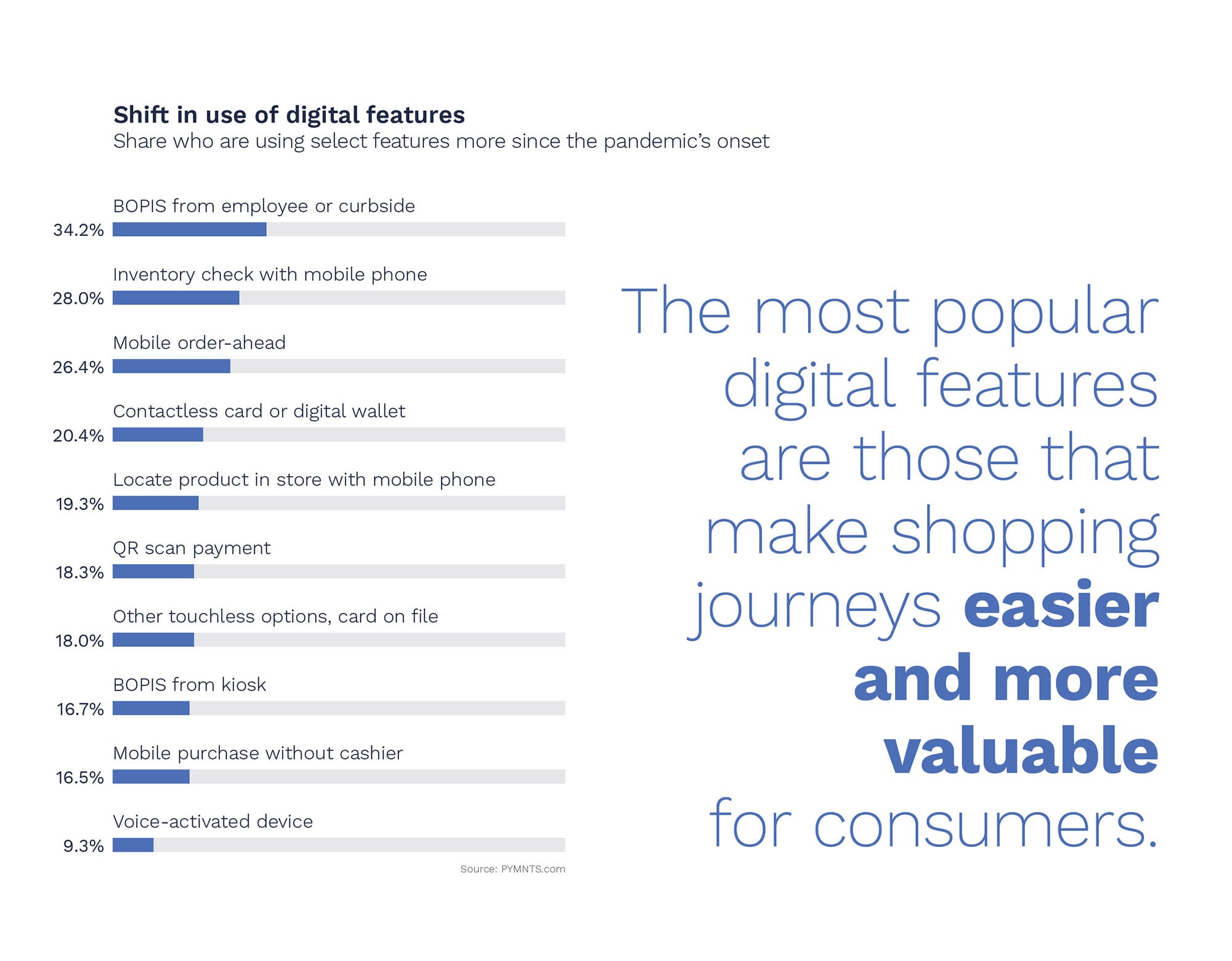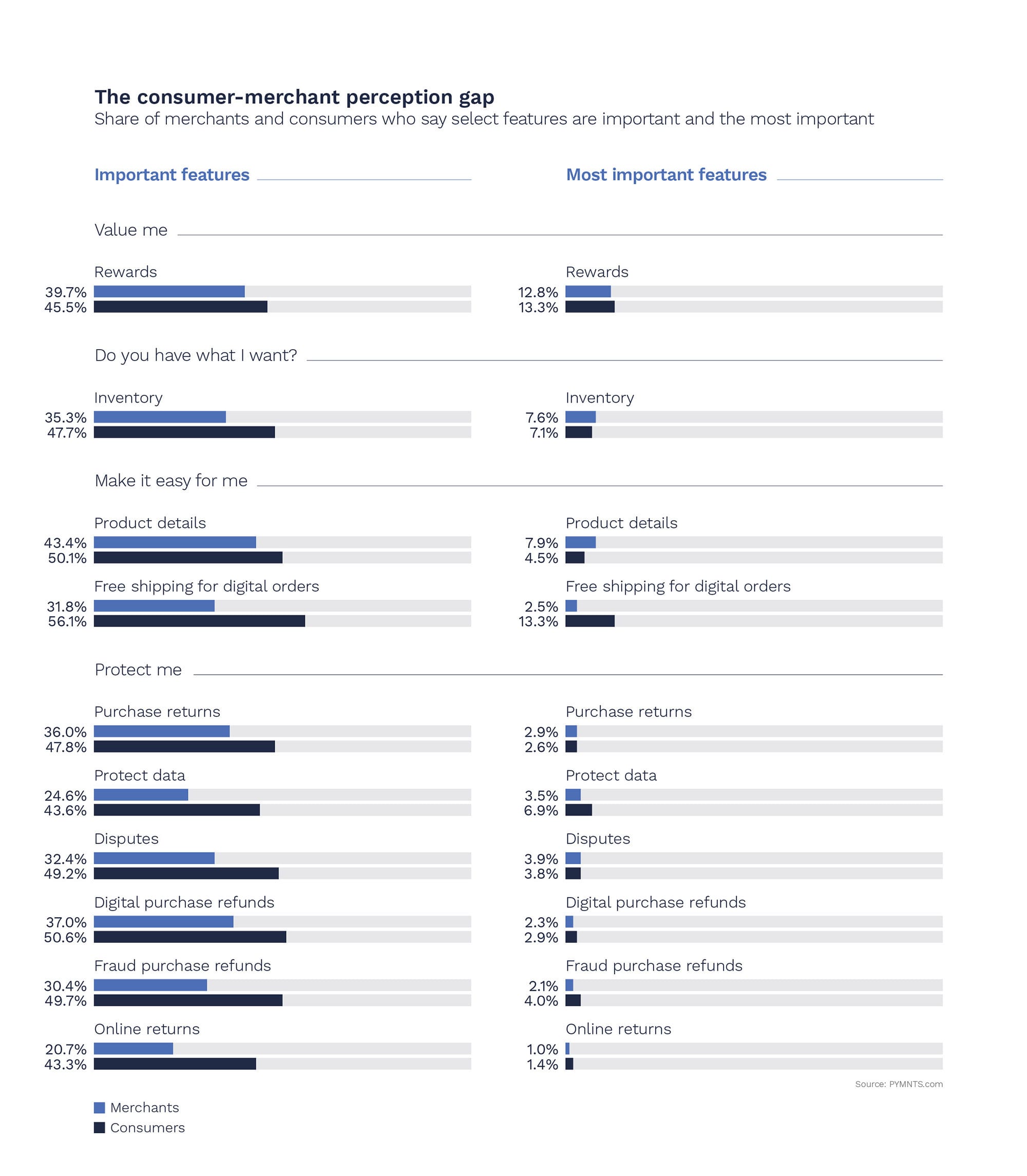Consumers Don’t Like Shopping In Physical Stores — Here’s Why

The digital-first nature of this year’s holiday shopping season has gone from theory to reality in short order. The unofficial official start of the 2020 holiday shopping season was Prime Day in early October, bumping out Black Friday in late November. By the time the “big” day rolled around last week, consumers were roughly 55 percent of the way through their holiday shopping.
Three out of every four consumers who shopped for their holiday purchases on Black Friday this year made at least one of those purchases online, and three in 10 exclusively shopped online, according to exclusive PYMNTS Black Friday data. Other reports indicated that Black Friday physical foot traffic plummeted by 50 percent in 2020, while data from Adobe analytics indicates that digital sales soared, up 22 percent over 2019 to hit $9 billion.
But while the pandemic may be the obvious and easy answer to the Black Friday digital shift, it’s not the whole explanation. According to the latest PYMNTS Global Digital Shopping Index, consumers aren’t avoiding stores because COVID-19 means they have to, but because they want to. Shopping in a store just isn’t as satisfying or enjoyable as shopping online for a mass of consumers. The PYMNTS Consumer Satisfaction Index shows online natives — the consumer group most likely to begin and complete their shopping journeys via digital channels — are the most satisfied, scoring 158.7 overall with a median of 100. Mobile natives — shoppers who begin and complete their shopping journeys via mobile phones — follow closely behind.
The reason is rather obvious in retrospect. Consumers use — and merchants offer — far more features when shopping using digital channels, with everything from product reviews to price comparisons to the all-important inventory status. There’s nothing more frustrating for a consumer — COVID or no COVID — than going into the store only to find that what she wanted to buy is out of stock.
The data further demonstrates that the most popular features are those that make the shopping journey feel efficient and rewarding for consumers.
Consumers want rewards — 39.8 percent use them or would do so — and free shipping for digital purchases, with 46.2 percent using the option and 22 percent expressing interest. They want more certainty and efficiency in the shopping experience. That includes features such as the option to purchase online and pick up curbside (34.2 percent of consumers report using this more), or verify that a product is in stock (28 percent use more often), order ahead via mobile (at 26.4 percent) or pay with contactless cards or digital wallets (at 20.4 percent).
The absence of those features makes the in-store shopping experience friction-filled, less efficient, less rewarding and less satisfying.

But to give consumers what they want, the Digital Shopping Index reports, merchants themselves need to get a clearer picture of what that is — and a better awareness of the blind spots the data reveals they tend to have.
While merchants have invested heavily in expanding and improving their consumers’ digital journey, the data finds, they often tend to misunderstand how important certain features actually are to their customer base vs. others. The availability of free shipping stands as an excellent example. Consumers really value it: according to PYMNTS research, 56.1 percent of consumers view free shipping for digital orders as an important feature. But while more than half of consumers value free shipping highly, slightly less than a third of merchants (31.28 percent) place a similar value on it. The story is similar for data protection: 43.6 percent of consumers view this as important — close to twice the share of merchants who believe their customers have this view.

The moral of the story is not to give up on physical retail, despite the fact that consumers have clearly shown strong preferences for digital shopping journeys. Because despite the limitations of the moment, PYMNTS data also indicates that physical shopping options remain integral to consumer satisfaction — as top-performing merchants do not just sell online, but across channels. Consumers still value in-store shopping, but they would like it to offer more of the fluidity and convenience found in digital channels.
What they want is a more satisfying, relevant shopping experience.
